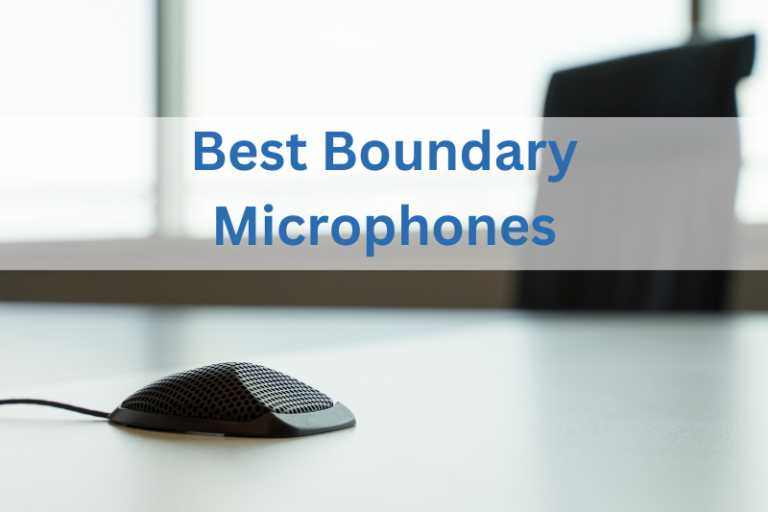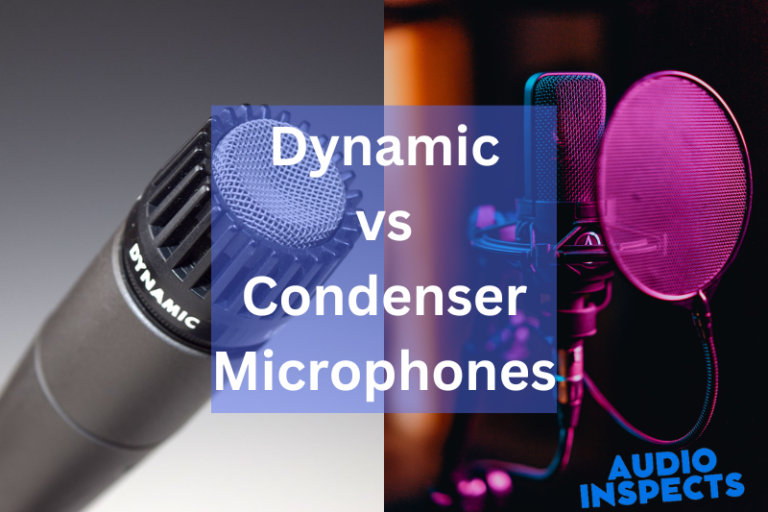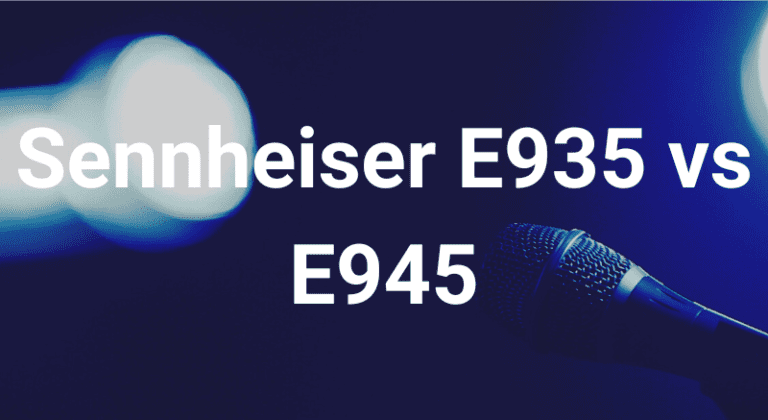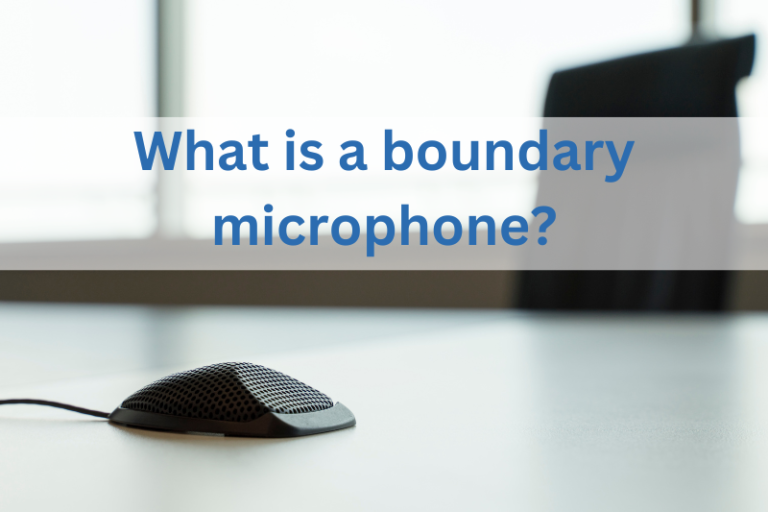What is a Boundary Microphone?
In this post, we describe what is a boundary microphone, how it works, how to use and when to use it. A boundary microphone is a microphone that records sound by sensing the motion of air in front of its surface. The microphone is usually mounted on a stand or tripod and is placed at a distance from the source of sound (e.g., a person speaking into the microphone).

What is a boundary microphone?
A boundary microphone, also known as a boundary layer microphone or a boundary condenser microphone, is a type of microphone that is designed to be placed on a flat surface, such as a table or a podium. The microphone’s diaphragm is typically positioned very close to the surface, which helps to reject unwanted ambient noise and improve the clarity of the sound it picks up.
Boundary microphones are often used in situations where a person is speaking from a fixed location, such as in a conference room, a classroom, or a courtroom. They can also be used for recording lectures, podcasts, and other spoken-word content.
Because the microphone is near the sound source and the sound waves are reflected off the surface it is on, this results in a frequency response and directivity pattern that is different from other types of microphones. This design can help to reduce echoes and background noise.
One of the benefits of boundary microphones is that they can be inconspicuous and can easily blend in with the surroundings. They are also relatively easy to install and can be powered by a nearby outlet or by batteries.
Boundary microphones are not the best solution for all types of applications, such as recording music or capturing sounds in an outdoor environment, but they have a specific purpose to help gather spoken word in a controlled environment.
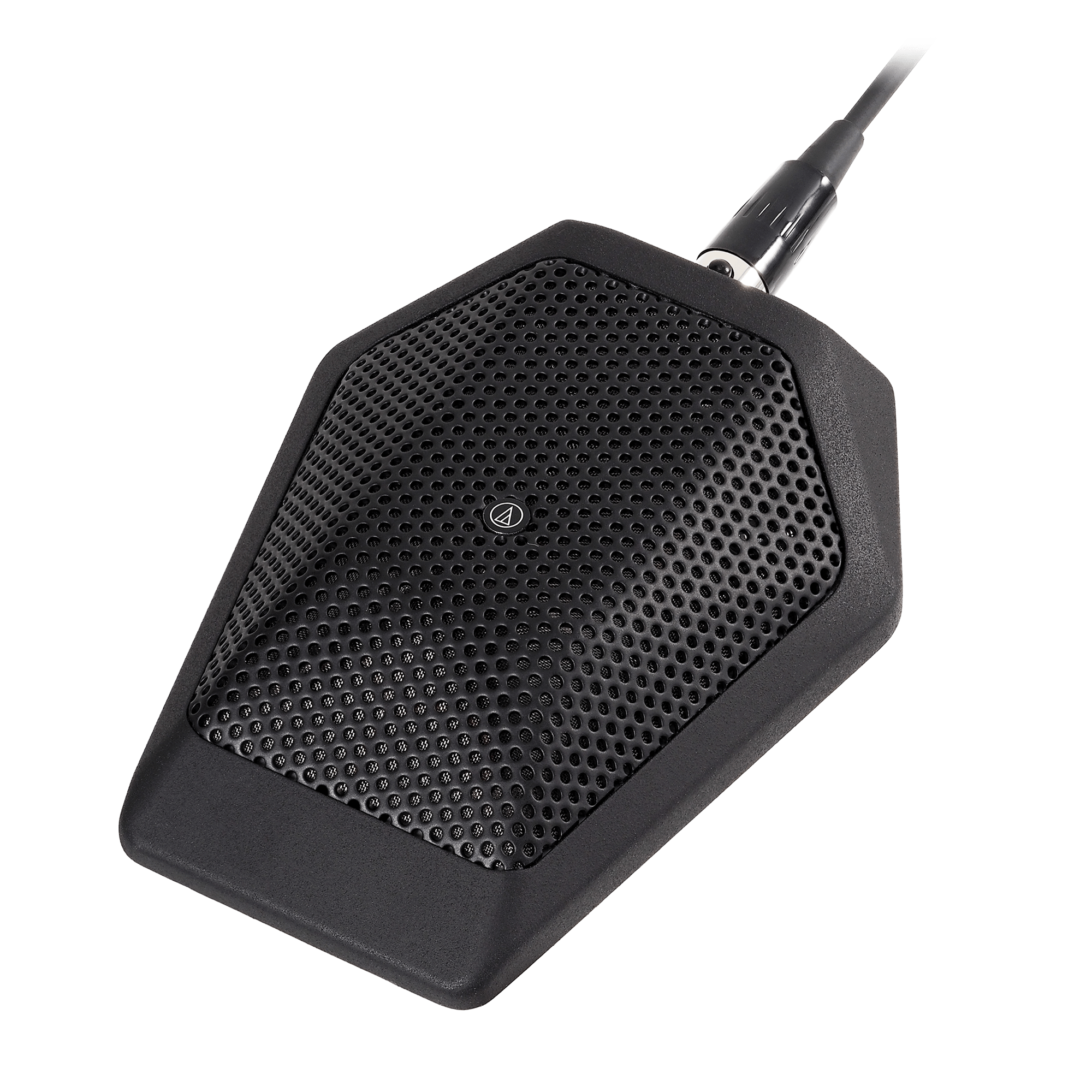
How does a boundary mic work?
A boundary microphone works by using a pressure-gradient transducer, which is a type of microphone that uses a diaphragm to convert sound waves into electrical signals. The diaphragm, typically a small and very thin piece of plastic or metal, is positioned very close to the surface on which the microphone is placed.
When sound waves hit the surface and are reflected toward the microphone, they pass through the diaphragm and cause it to vibrate. This vibration generates an electrical current, which is then amplified and sent to an audio input.
Because the diaphragm is positioned close to the surface, it can pick up sound waves that are coming directly from the source, while rejecting ambient noise and echo. Additionally, the design of the boundary microphone makes it highly directional, meaning that it is most sensitive to sound coming from directly in front of it while being less sensitive to sound coming from other directions.
Boundary microphones are also omnidirectional polar patterns, meaning that they pick up sound equally from all directions, or unidirectional, meaning that they pick up sound primarily from one direction, depending on the specific model.
It’s important to note that a boundary microphone does not necessarily require a surface to be placed upon, it could be floating in space, the key element is the proximity of the diaphragm to a reflecting surface which makes the microphone act as a pressure-gradient microphone.
How to use a boundary microphone?
Using a boundary microphone is relatively straightforward, but there are a few key considerations to keep in mind to get the best performance from the microphone:
- Positioning: The first step is to position the microphone correctly. The microphone should be placed on a flat surface that is near the sound source. Ideally, the diaphragm should be about 1-2 inches away from the surface, and the surface should be large enough to reflect sound effectively. A good rule of thumb is to place the microphone on a surface that is at least twice the size of the diaphragm.
- Aiming: Once the microphone is positioned, aim it at the sound source. This is especially important if the microphone is unidirectional, as it will only pick up sound from the direction it is facing.
- Powering: Most boundary microphones require external power, either from an AC outlet or batteries. Make sure that the microphone is properly powered and that the power source is stable.
- Connecting: The next step is to connect the microphone to an audio input, such as a mixing board, a digital recorder, or a computer. Follow the manufacturer’s instructions for connecting the microphone to your equipment.
- Gain and EQ: Finally, adjust the gain (the input level of the microphone) and equalization (EQ) to suit the environment and the sound source. You may need to experiment with different settings to find the optimal settings for your situation.
It is also important to note that, depending on the purpose, room conditions, and setup, you may need to place additional equipment such as a sound mixer, a preamp, or even an equalizer to get a better sound.
Once you’ve done that, you’re all set! The microphone should be ready to use. Be sure to test the microphone before the event or recording to ensure that you have the best sound quality possible.
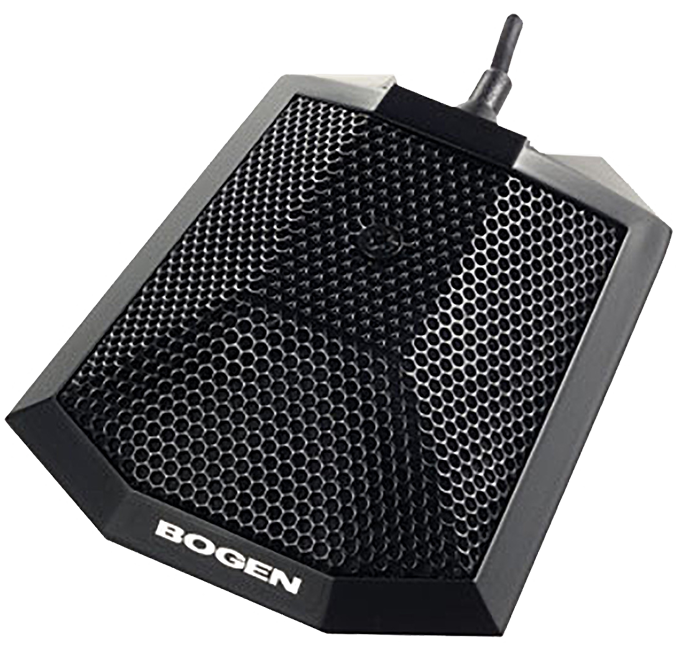
When to use a boundary microphone?
Boundary microphones are best suited for situations where a person is speaking from a fixed location, such as in a conference room, a classroom, or a courtroom. They are also a good choice for recording lectures, podcasts, and other spoken-word content. Here are some examples of specific scenarios where a boundary microphone can be useful:
- Conferences and Meetings: Boundary microphones are often used in conference rooms and other meeting spaces. They can be placed on tables or podiums to pick up the speakers’ voices clearly and reject ambient noise.
- Courtrooms: Boundary microphones are also used in courtrooms. They can be placed on tables or podiums to pick up the voices of the judge, attorneys, and witnesses clearly and reject ambient noise.
- Lectures and presentations: Boundary microphones are often used in classrooms and other presentation spaces to capture the voice of the lecturer or speaker. They can also be used to record lectures for online classes or podcasts.
- Religious services and ceremonies: Some religious services and ceremonies are conducted in spaces such as a church, a mosque, or a temple. A boundary microphone can be used to pick up the voice of the minister or imam clearly while rejecting ambient noise.
- Interviews or Podcasts: When conducting an interview or a podcast where one person speaks most of the time, a boundary microphone placed on a desk or table, will help to pick up the voice clearly while rejecting ambient noise.
- In-House Corporate Communications: To deliver speeches, announcements, or training presentations within the company, a boundary microphone can be used to capture the speaker’s voice clearly and crisply, while reducing background noise.
However, boundary microphones are not the best choice for all types of applications, such as recording music or capturing sounds in an outdoor environment, and it’s important to consider the specific requirements of the situation before deciding to use one.
What are the advantages of boundary microphones?
Boundary microphones have several advantages, including:
- High sensitivity: Because the microphone uses the surface on which it is placed as a boundary, it can pick up sound more effectively, even from a distance.
- Reduced noise: The boundary design of the microphone helps to reduce unwanted background noise, such as echoes and reverberation, making the audio clearer and more intelligible.
- Directionality: Many boundary microphones have a directional pickup pattern, which means they can capture sound primarily from one direction. This can help to further reduce background noise and improve the clarity of the audio.
- Easy to set up: Boundary microphones are easy to set up and do not require additional equipment such as stands or boom arms.
- Versatility: Boundary microphones can be used in a variety of settings, such as conference rooms, lecture halls, and other venues.
- Cost-effective: They are generally less expensive than other types of microphones such as condensers or dynamic microphones.
- Low profile: They are often small and unobtrusive, which makes them suitable for video recording or live streaming.
What are the disadvantages of boundary microphones?
Boundary microphones also have some disadvantages, including:
- Limited range of movement: Because the microphone is fixed in place on a surface, it is not able to move around to capture sound from different directions.
- Limited use: They are not suitable for all types of applications, such as recording live music or capturing sound from moving sources.
- Limited to proximity use: They are best suited for capturing speech at proximity, and may not perform as well in large venues or for capturing sound at a distance.
- Positioning is crucial: To optimize the performance of a boundary microphone, it must be positioned correctly on the surface.
- Surface dependency: The microphone’s performance is highly dependent on the surface on which it is placed and sound quality can vary depending on the surface.
- Limited control: The audio level and tone cannot be adjusted by the user as much as with a traditional microphone.
- Risk of damage: They are also more vulnerable to damage if placed in an area where it is knocked or bumped.
Our Mission: At AudioInspects, we are dedicated to providing the most comprehensive and authentic reviews of audio equipment on the market. We conduct independent testing and research of products, so you can make an informed decision before making a purchase. Our mission is to help you find the best audio equipment to improve your listening experience. So trust us to deliver the most reliable recommendations and advice.
Disclosure: When you do decide to make a purchase through our links, please note that we may earn a commission, but this does not affect the honesty of our reviews. You can read our affiliate disclosure in our Disclosure.


